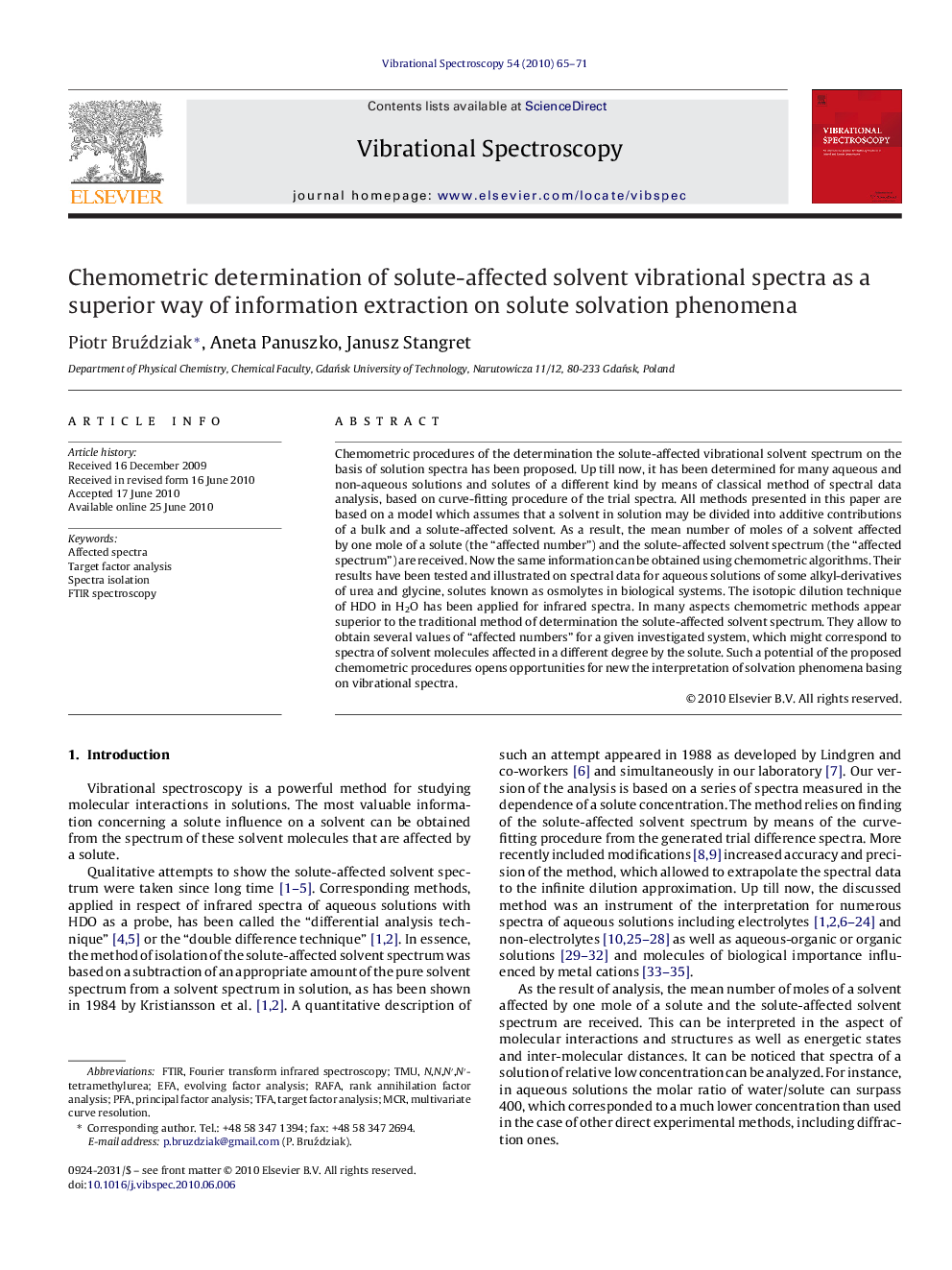| Article ID | Journal | Published Year | Pages | File Type |
|---|---|---|---|---|
| 1250317 | Vibrational Spectroscopy | 2010 | 7 Pages |
Chemometric procedures of the determination the solute-affected vibrational solvent spectrum on the basis of solution spectra has been proposed. Up till now, it has been determined for many aqueous and non-aqueous solutions and solutes of a different kind by means of classical method of spectral data analysis, based on curve-fitting procedure of the trial spectra. All methods presented in this paper are based on a model which assumes that a solvent in solution may be divided into additive contributions of a bulk and a solute-affected solvent. As a result, the mean number of moles of a solvent affected by one mole of a solute (the “affected number”) and the solute-affected solvent spectrum (the “affected spectrum”) are received. Now the same information can be obtained using chemometric algorithms. Their results have been tested and illustrated on spectral data for aqueous solutions of some alkyl-derivatives of urea and glycine, solutes known as osmolytes in biological systems. The isotopic dilution technique of HDO in H2O has been applied for infrared spectra. In many aspects chemometric methods appear superior to the traditional method of determination the solute-affected solvent spectrum. They allow to obtain several values of “affected numbers” for a given investigated system, which might correspond to spectra of solvent molecules affected in a different degree by the solute. Such a potential of the proposed chemometric procedures opens opportunities for new the interpretation of solvation phenomena basing on vibrational spectra.
